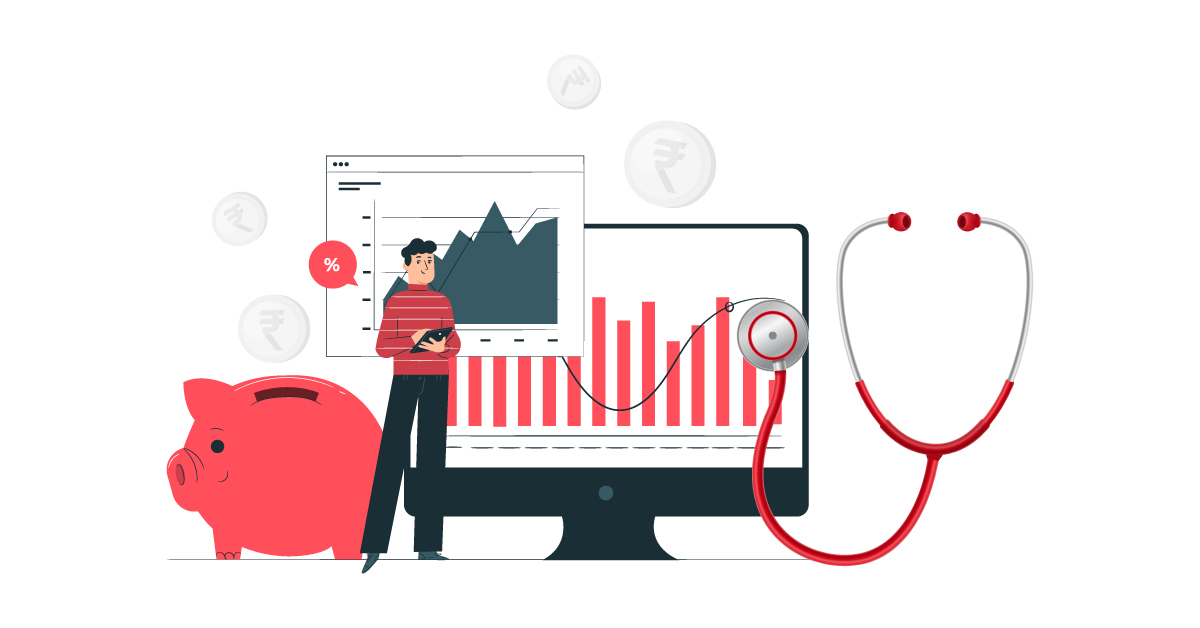How to check your mutual fund portfolio’s health?

Four questions that you need to ask yourself while reviewing your mutual fund portfolio.
Just like your body needs regular health checkups to sustain life expectancy and detect any disease that may be a risk to life, your portfolio also needs regular health checkups to provide you with the maximum returns on your investments.
It would help if you analysed how your portfolio is performing as we always say financial planning is not a one time process. It requires a regular portfolio analysis as the markets and macroeconomic factors change during our investment. In this article, the mutual fund portfolio considers the overall investments in mutual funds, including different types of mutual funds.Â
While investing in mutual funds, your fund manager usually invests in the stock or debt market according to the scheme’s objectives, expected rate of returns, and, most importantly, risk tolerance level. Along with the changes in the industry cycle, geopolitical tensions and agreement between the countries, domestic government policies, etc., are some of the various factors that affect the underlying instruments and your mutual portfolio. Also, as your financial plan and objectives change, your existing portfolio may not work for you.
So, in this article, we will understand how to check mutual fund portfolio, how to see mutual fund portfolios and mutual funds portfolio analysis. There are a few questions you should ask yourselves timely to review your portfolio’s health:
Is my portfolio still matching my risk profile?
You, as an investor, have a particular risk tolerance capacity, which changes over some time. Risk appetite is decided by various factors like age, earnings, liabilities, investible surplus, and propensity to handle volatility emotionally.
Generally, we can bear losses at a young age as we have time on our hands to fix such losses.
Youngsters can create a mutual fund portfolio that is equity centric. But, in senior citizens’ cases, preference moves toward high-quality debt funds that aim to protect their capital and offer regular income.
So, as we grow older or our financial situation changes, our risk tolerance may not remain the same. Hence, it is essential to evaluate if the overall portfolio risk is aligned with your risk profile.
Is my mutual fund portfolio diversified?
Portfolio diversification typically means spreading your investments in a way that helps you to minimise losses and optimise returns. You can diversify your portfolio between equity and debt funds or two or more funds within an asset category.
You can invest in different mutual funds as per your risk tolerance level. For instance, if you are an aggressive investor, a major portion of your investments may be invested in equities and vice versa.
Are any of the companies invested by my mutual fund in a financial crisis?
Mutual fund invests in various investment instruments issued by companies. So, negative sentiments surrounding the companies might also affect the fund’s returns.
You can read daily financial newspapers to keep yourselves updated. You can look for news related to your mutual fund portfolio companies and analyse if it will positively or negatively affect your portfolio. Also, daily financial news can help to list the potential growth sectors and industries which might be beneficial for your future investments in mutual funds.
Is it time to meaningfully rebalance my portfolio?
A health check of the mutual fund portfolio and portfolio analysis is essential for getting mindful returns. However, rebalancing or redirecting your portfolio and investment strategy is not mandatory after the analysis. If your returns are up to mark and you see the potential in your current portfolio, then the core strategy of your portfolio will be beneficial for the long term.

Remember, portfolio rebalancing has various costs, and you need to evaluate the impact of all these costs. A regular portfolio health check is a must for any portfolio.
Re-evaluate your financial goals
Your investment portfolio should have a goal-oriented approach to help achieve your financial needs.
Redirecting the investments to achieve financial goals is a continuous process over a period of time. With changing time and growing age, some financial goals also do change, which essentially requires diversification of your portfolio. Once you re-evaluate your goals, you need to conduct portfolio analysis and look for the investment opportunities that you can continue. Moreover, you may also have to sell some of your investments in a specific mutual fund/s or invest in a new or existing mutual fund scheme.Â
Conclusion:
The objective behind the mutual fund portfolio analysis and portfolio health checkup is to eliminate the funds that are not performing well for a considerable amount of time. Keep an eye on your portfolio and check your mutual fund portfolio regularly.

